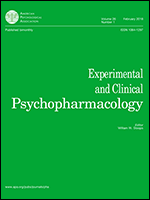
“The endocannabinoid system has been shown to be associated with neurodegenerative diseases and dementia.
We review the preclinical and clinical data on cannabinoids and four neurodegenerative diseases: Alzheimer’s disease (AD), Huntington’s disease (HD), Parkinson’s disease (PD) and vascular dementia (VD).
Numerous studies have demonstrated an involvement of the cannabinoid system in neurotransmission, neuropathology and neurobiology of dementias. In addition, several candidate compounds have demonstrated efficacy in vitro.
However, some of the substances produced inconclusive results in vivo. Therefore, only few trials have aimed to replicate the effects seen in animal studies in patients. Indeed, the literature on cannabinoid administration in patients is scarce.
While preclinical findings suggest causal treatment strategies involving cannabinoids, clinical trials have only assessed the suitability of cannabinoid receptor agonists, antagonists and cannabidiol for the symptomatic treatment of dementia.
Further research is needed, including in vivo models of dementia and human studies.”







